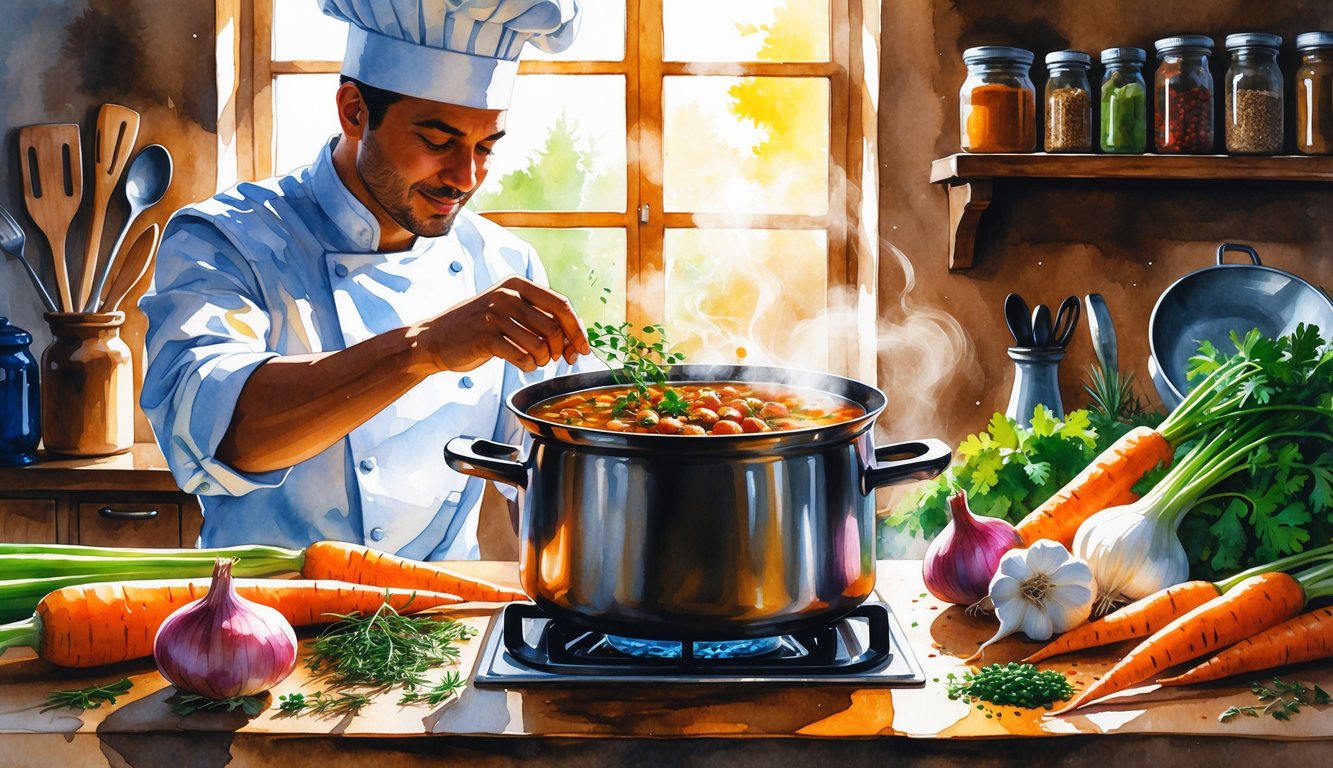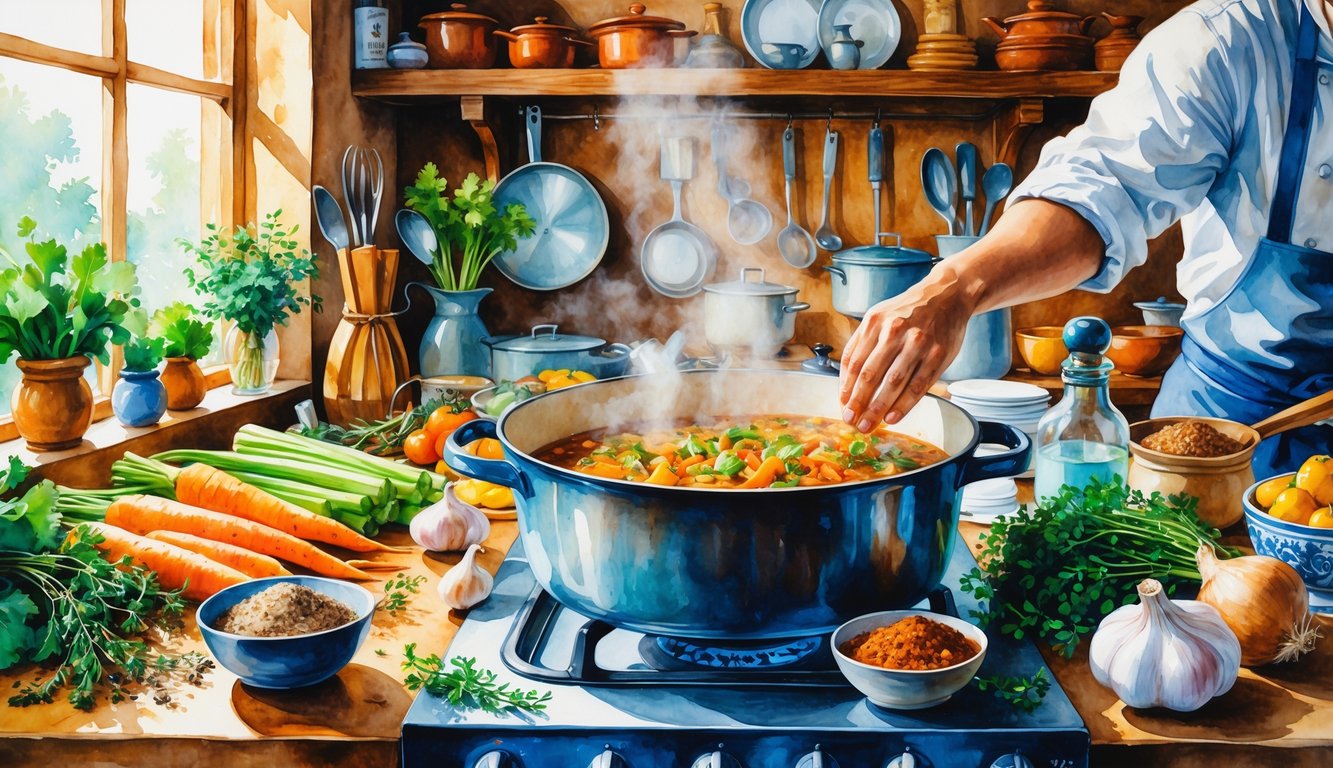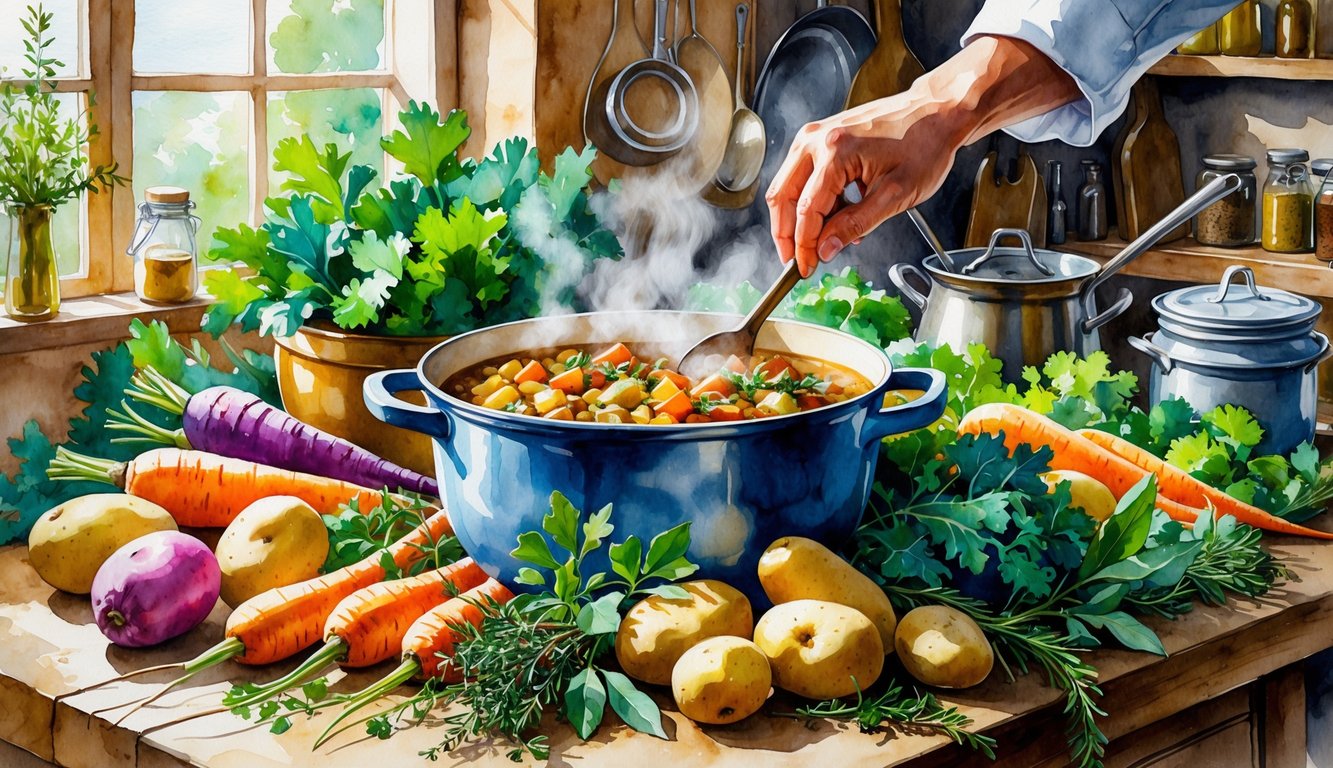
Building the Ultimate Stew Base

It’s wild how one tiny change—swapping stock, adding umami, or just squeezing in tomato paste—can flip your stew from forgettable to “who taught you to cook?” Every chef I’ve asked says the base is everything. If you mess it up, just order takeout.
Stock, Broth, and Tomato Paste Choices
Standing in the soup aisle, I always feel judged. Beef stock? Classic. Chicken broth? Sometimes better with tomato paste. Water? Why bother. Real talk, every chef from New York to my dad says the secret is consistency, not brand. Chef Joanne Weir says brown your tomato paste in fat—don’t just stir it in. It gets sweet, rich, and suddenly your stew has actual flavor. I do it now without thinking. If I’m out of beef stock, I use chicken broth and just add more tomato paste and salt. Nobody’s complained yet. More flavor upgrade tips here.
Incorporating Umami Boosters
Soy sauce in stew? Yeah, I was suspicious too. But it works. Worcestershire, anchovy paste, even fish sauce (don’t tell my family) all add something boxed broth can’t. Ivan Beacco says the sear is huge, but also, try a little miso or mushroom powder. Sounds weird, but it’s legit. I tossed in dried porcini once and now I do it all the time, thanks to a stubborn Italian friend.
Weirdly, a pinch of sugar—yeah, experts say so—brings out the veggies. Don’t go overboard. Stack flavors, build umami, and don’t stress about being exact. Just taste and adjust. Or don’t. It’s stew, not rocket science.
Vegetable and Aromatic Upgrades

Honestly, “exact ratios” for stew? I can’t even pretend to care. Most of my stews start with me staring at whatever’s left in the crisper—carrots, leeks, celery, sometimes a sad half-onion—and then just winging it. Garlic? It’s gone before I even start, probably because I put double in everything. Not sorry. If you want a stew that actually tastes like something, you’re gonna need more garlic than whatever some recipe says. I don’t get why people obsess over the “right” veg combo—how you cook them matters way more than what you buy.
Sautéing Garlic, Onions, and Mushrooms
Rushing the sauté? Been there, scorched that. Burnt onions are a crime, but if you let them caramelize, suddenly you’ve got real flavor that doesn’t vanish after hours on the stove. Chef Roberta C. (apparently a Michelin person, but who checks these things?) swears by extra onions and a big pour of olive oil; butter just makes my kitchen smell like a movie theater, which is… distracting. I smash garlic and throw it in, barely even bothering to peel it properly. No one’s complained.
Mushrooms: skip them and you’re left with watery sadness. I’ve tried. Creminis, dried porcini, whatever—just dump them in. The difference is wild. When stuff starts sticking and browning, I splash in wine or stock, mostly because I saw a chef do it on YouTube and it actually works. Apparently there’s a whole science to it, but this post convinced me to stop being lazy about sautéing.
Choosing the Right Vegetables for Texture
Potatoes—sometimes they’re just mush. Parsnip or celery root? They hold up, they’re not boring, and suddenly I’m not eating glue. Butternut squash always melts into nothing if I forget to add it late, which I do, so now I stick post-its everywhere. Texture matters. I’m not five, I don’t want paste.
Chefs go on about “fresh, firm” veggies like it’s a religion. Floppy carrots taste weird, even after forever in the pot. I tried searing each veg separately once—huge pain, but the stew was actually good, so maybe there’s something to it. If you’re lost, Jamie Oliver’s team has a guide, but honestly, I just use whatever’s not rotting in the fridge. Ratios are a myth.
Herbs and Spices: Elevating Flavor Profiles
Didn’t think I’d ever care this much about herbs, but now I’m up at midnight arguing with myself about bay leaves. Who actually remembers to use those? The right blend isn’t about name-dropping every herb you own; it’s timing, it’s instinct, and it’s definitely not taking a recipe at face value.
Fresh Herbs Versus Dried: What Top Chefs Prefer
Every time someone says “fresh is best,” I remember Thomas Keller telling a roomful of food nerds to use dried oregano for depth and fresh thyme at the end. Tried it. Burned a few pots. Worth it? Maybe. Dried rosemary is basically chewing pine needles. Use a fresh sprig at the end instead—trust me, it’s not even close.
Supposedly, dried herbs like bay leaves and black peppercorns survive long simmers the best (Food Science Journal, 2022, if you care). Fresh parsley or basil? That’s for last-minute tossing, not slow-cooking. I once did a side-by-side with five Dutch ovens (don’t ask) and yeah, layering dried early and fresh late is what all the chefs do. Not that I always remember.
I keep both dried and fresh herbs around because nothing’s worse than a flat-tasting stew and realizing you forgot to buy thyme. Measuring by eye is a vibe. Perfectionists are missing the point.



